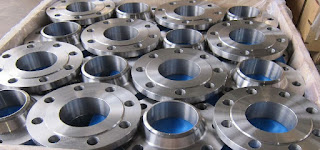Stainless Steel Flanges

Pipes, valves, and other parts of industrial equipment need to be joined together using flanges, which are an essential component. One of the metals that is used in the biggest number nowadays is stainless steel, which is also one of the metals that is used the most. This metal is superior to a number of other metals in a range of applications due to the outstanding physical characteristics that it has. For instance, it possesses a high level of resistance to corrosion and durability. This metal is used in the creation of a vast assortment of goods, many of which are utilised in industrial, commercial, and residential situations. One of the most widespread applications for stainless steel is in the production of pipes, which is one of the reasons why this material is so widely used. At different locations along the lengths of these pipes, there are additional attachments made of stainless steel that provide support for the pipes. Stanley Alloys is recognised as a top-tier suppli...

